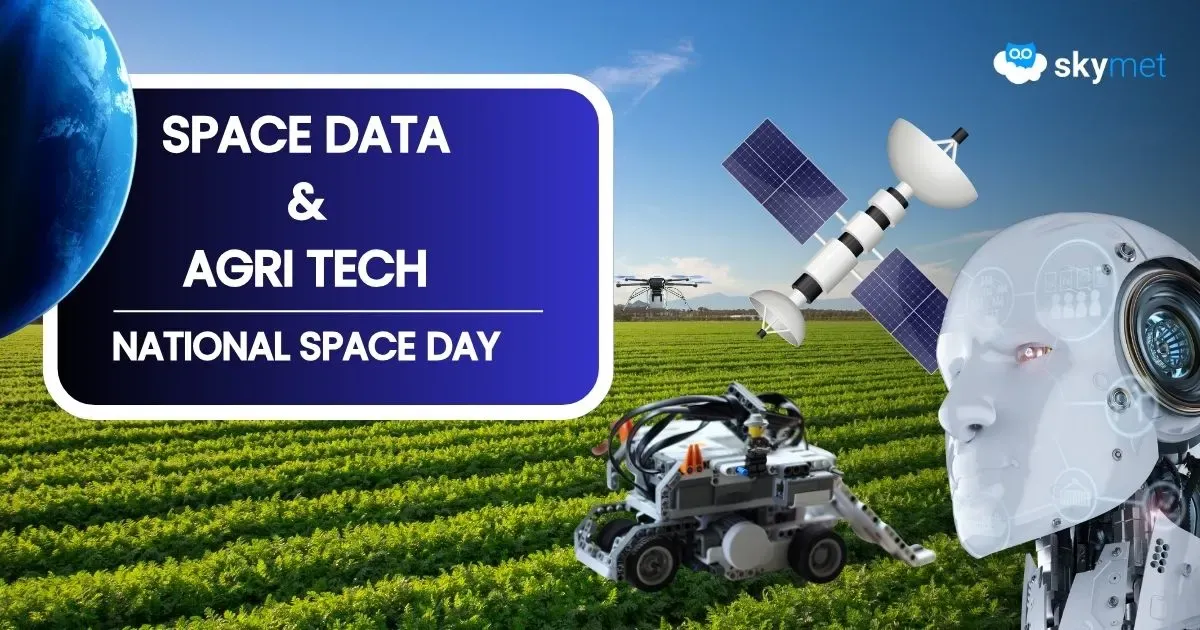India celebrates its second National Space Day today, marking two years since the nation became the fourth to land on the Moon and the first to touch its southern polar region on August 23, 2023. The 2025 theme, “Aryabhatta to Gaganyaan: Ancient Wisdom to Infinite Possibilities”, highlights the continuum from ancient Indian astronomy to the cutting edge of human spaceflight, while also emphasizing the profound role of space technology in the everyday resilience of India’s agriculture and food systems.
Over 1,500 years ago, Aryabhatta calculated planetary motions with remarkable precision, building a foundation of astronomical inquiry that continues to inspire Indian science. Today, the country operates a constellation of Earth observation satellites that deliver high-resolution data on soil moisture, vegetation health, surface temperatures, and rainfall patterns. These orbital streams, when processed through artificial intelligence and validated on the ground, generate highly localized forecasts with lead times of 72 to 120 hours and accuracy levels above 85 percent. For a country where monsoon variability and climate extremes are intensifying, such precision forecasting has become an operational necessity.
In 2024, India experienced eleven major extreme weather events, including heatwaves that stretched over weeks and erratic rainfall that delayed sowing across more than nine million hectares. The integration of space-based meteorology into agriculture has been crucial in minimizing the impact of such shocks. By translating complex indicators like NDVI for crop stress, LST for heat stress, and CHIRPS rainfall data into actionable advisories, farmers are able to make informed decisions on irrigation schedules, fertilizer application, and pest management. These advisories, delivered through multilingual voice calls, SMS alerts, and app-based platforms, have already shown tangible results. Pilot zones have reported reductions in irrigation costs by 10 to 15 percent, improved nutrient efficiency through better-timed fertilizer use, and significantly fewer yield losses due to unanticipated weather fluctuations.
As these ground-level applications demonstrate the direct benefits of space science to society, India continues to expand its orbital ambitions. The upcoming Gaganyaan programme, with its first test launch scheduled for December 2025, represents the next leap in human spaceflight. Chandrayaan-4, approved in September 2024, is designed to master safe-return technologies within 36 months. A Venus orbiter is scheduled around 2028, broadening planetary science beyond the Moon and Mars, while the planned Bharatiya Antariksh Station will serve as a national orbital laboratory for climate studies, Earth observation, and microgravity experiments, including agriculture-focused research. Mangalyaan-2, equipped with both a rover and helicopter, will extend India’s exploration of Mars with advanced surface mobility.
The 2025 theme—“Aryabhatta to Gaganyaan: Ancient Wisdom to Infinite Possibilities”—is thus not a ceremonial phrase but a reflection of a real scientific continuum. From ancient calculations of planetary cycles to modern AI-driven crop advisories, India’s space journey demonstrates how knowledge evolves across centuries while staying rooted in societal needs. Satellites today are not distant eyes in the sky; they are instruments embedded in India’s farmlands, shaping decisions that secure harvests, strengthen disaster readiness, and protect the food chain for over 1.4 billion people.
National Space Day 2025 reaffirms that space is no longer confined to exploration. It is an essential layer of national infrastructure, supporting resilience in the face of climate change while opening pathways to infinite possibilities in science and innovation.













